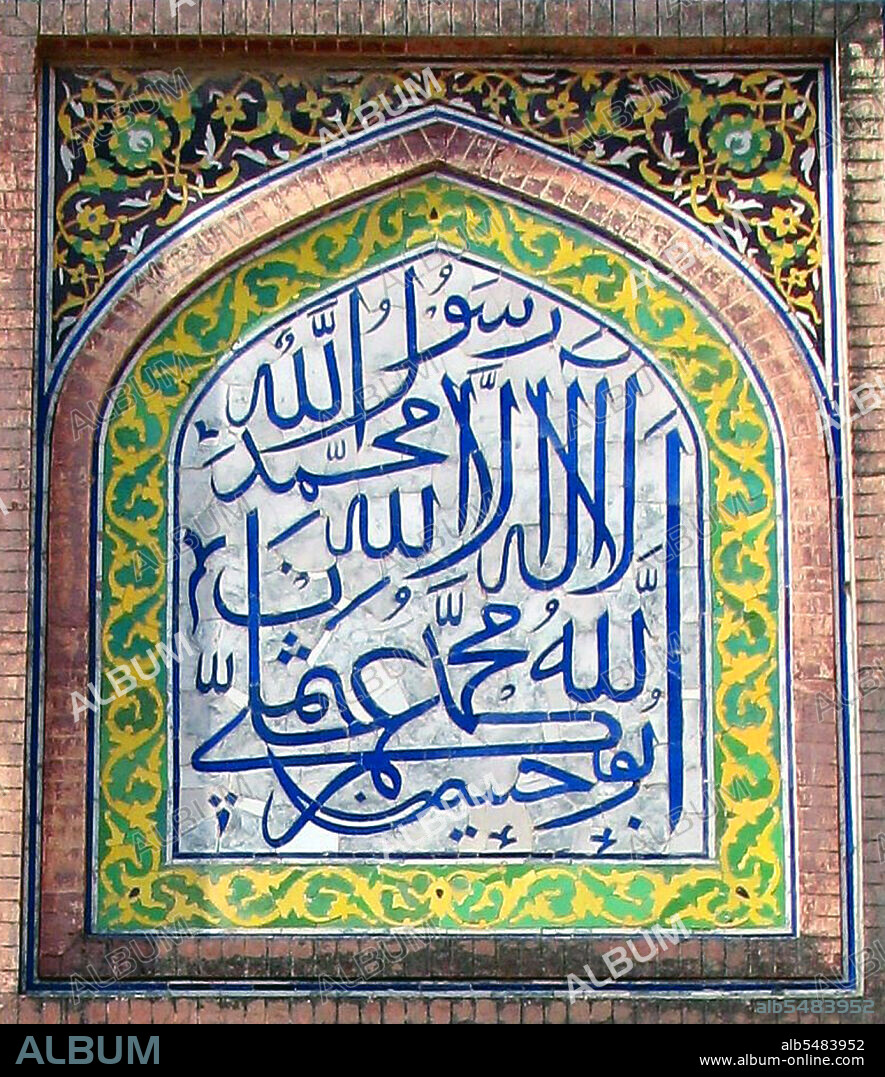alb5483952
Arabic calligraphy on glazed tiles, Wazir Khan Mosque, Lahore.

|
Add to another lightbox |
|
Add to another lightbox |



Buy this image.
Select the use:

Title:
Arabic calligraphy on glazed tiles, Wazir Khan Mosque, Lahore.
Caption:
The Wazir Khan Mosque (Masjid Wazir Khan) in Lahore, Pakistan, is celebrated for its extensive faience tile work. It has been described as 'a beauty spot on the cheek of Lahore'. It was built in seven years, starting around 1634-1635, during the reign of the Mughal Emperor Shah Jehan. It was built by Shaikh Ilm-ud-din Ansari, a native of Chiniot, who rose to be the court physician to Shah Jahan and later, the Governor of Lahore. He was commonly known as Wazir Khan. The mosque is located inside the Inner City and is easiest accessed from Delhi Gate. (Photo by: Atif Gulzar/Pictures From History/Universal Images Group via Getty Images)
Credit:
Album / Pictures From History/Universal Images Group
Releases:
Model: No - Property: No
Rights questions?
Rights questions?
Image size:
3922 x 4536 px | 50.9 MB
Print size:
33.2 x 38.4 cm | 13.1 x 15.1 in (300 dpi)
Keywords:
ARAB • ARABE • ARABIAN • ARABIC • ARCHITECTURAL • ARCHITECTURE • ART • ARTS • ASIA • ASIAN • CALLIGRAPHY • HISTORIA UNIVERSAL • HISTORIA • HISTORICAL • HISTORY • INDIA • ISLAM • ISLAMIC ARCHITECTURE • ISLAMIC • ISLAMISM • LEGEND • MASJID • MEZQUITA • MOSQUE • MOSQUES • MUSLIM • PAKISTAN • RELIGION • SCRIPT
 Pinterest
Pinterest Twitter
Twitter Facebook
Facebook Copy link
Copy link Email
Email
